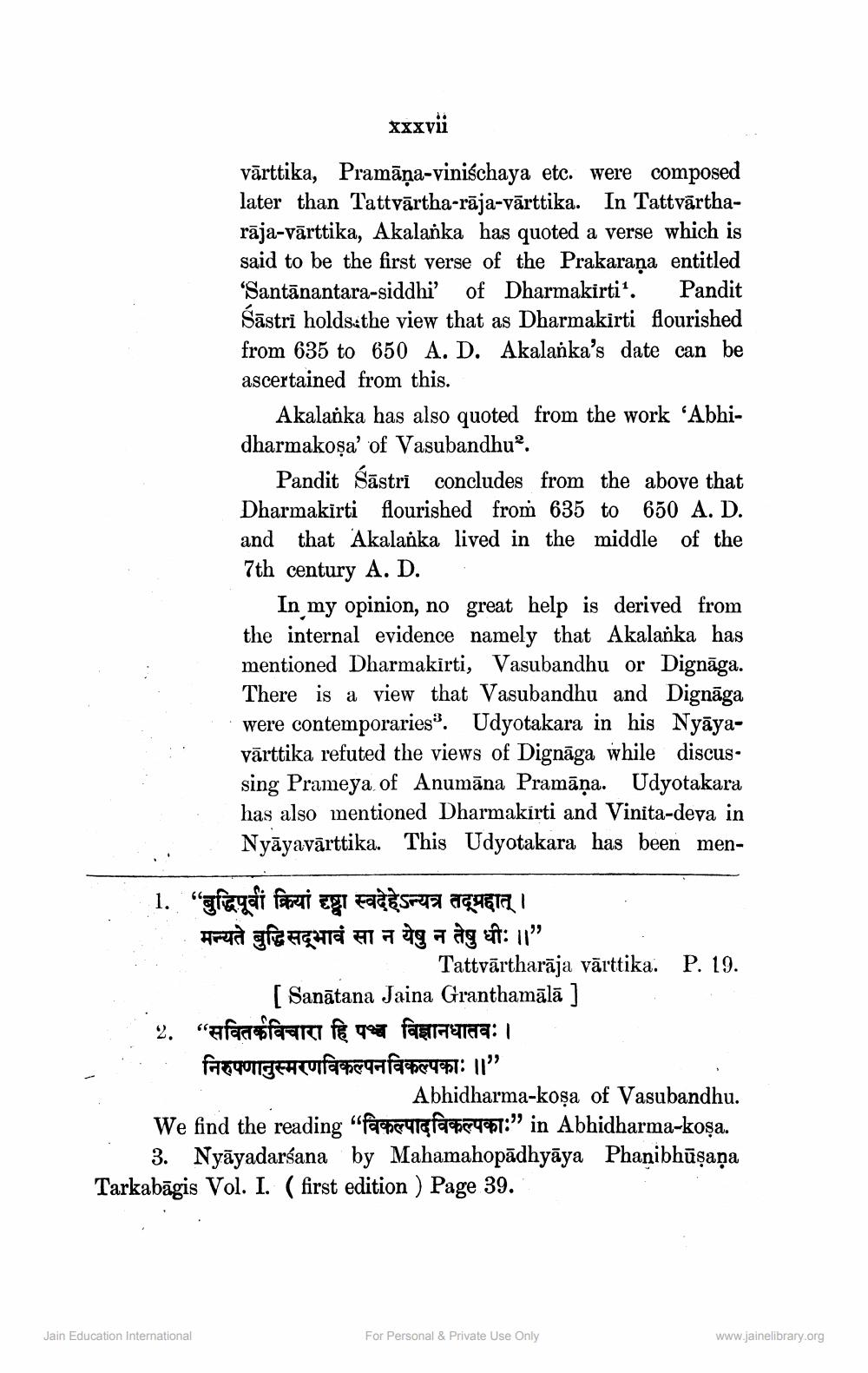________________
XXXVü
vārttika, Pramāņa-viniśchaya etc. were composed later than Tattvārtha-rāja-vārttika. In Tattvārtharāja-vārttika, Akalanka has quoted a verse which is said to be the first verse of the Prakaraña entitled Santānantara-siddhi' of Dharmakirti“. Pandit Sāstri holds the view that as Dharmakirti flourished from 635 to 650 A. D. Akalanka’s date can be ascertained from this.
Akalanka has also quoted from the work ‘Abhidharmakoşa' of Vasubandhuo.
Pandit Šāstri concludes from the above that Dharmakirti flourished from 635 to 650 A. D. and that Akalanka lived in the middle of the 7th century A.D.
In my opinion, no great help is derived from the internal evidence namely that Akalanka has mentioned Dharmakirti, Vasubandhu or Dignāga.
There is a view that Vasubandhu and Dignāga were contemporaries'. Udyotakara in his Nyāyavārttika refuted the views of Dignāga while discussing Prameya of Anumāna Pramāņa. Udyotakara has also mentioned Dharmakirti and Vinita-deva in Nyāyavārttika. This Udyotakara has been men
1. "glayali farmi egr FAQESUE TCHETT 1 Apa gle HTC HT a ag a ag eft: 11"
Tattvārtharāja vārttika. P. 19. [ Sanātana Jaina Granthamālā ] 2. "afar fara fe que fagnatura: 1 निरुपणानुस्मरणविकल्पनविकल्पकाः ॥"
Abhidharma-koşa of Vasubandhu. We find the reading "faloperire face geht:" in Abhidharma-kosa.
3. Nyāyadarśana by Mahamahopādhyāya Phanibhūşaņa Tarkabāgis Vol. I. (first edition ) Page 39.
Jain Education International
For Personal & Private Use Only
www.jainelibrary.org




